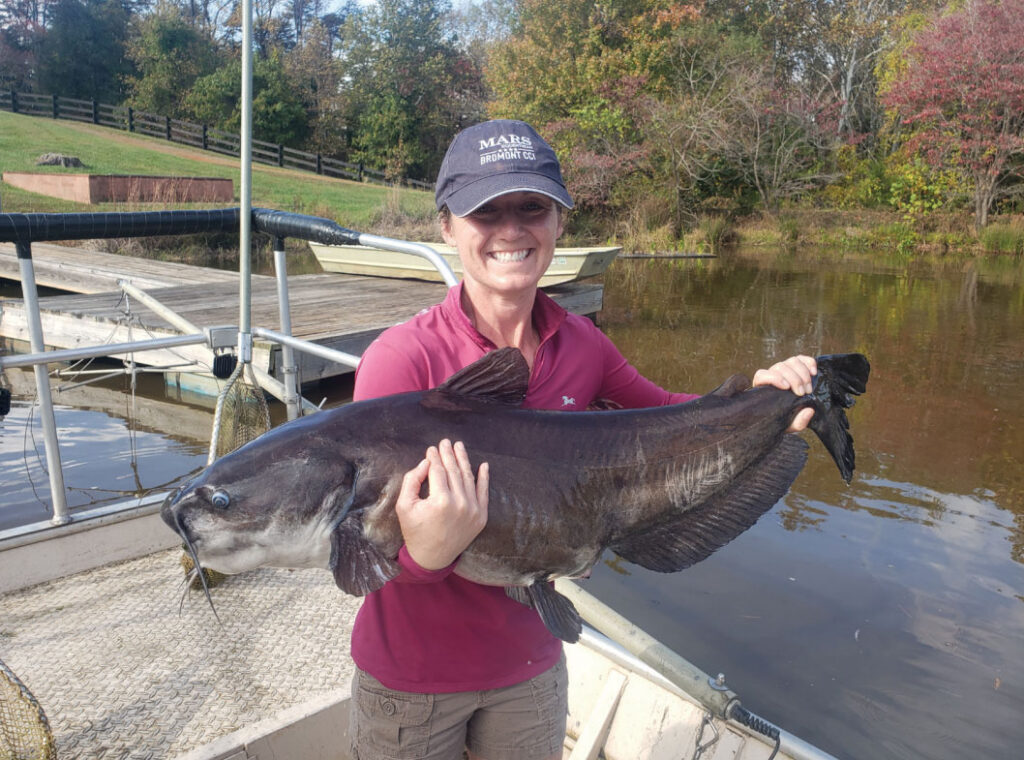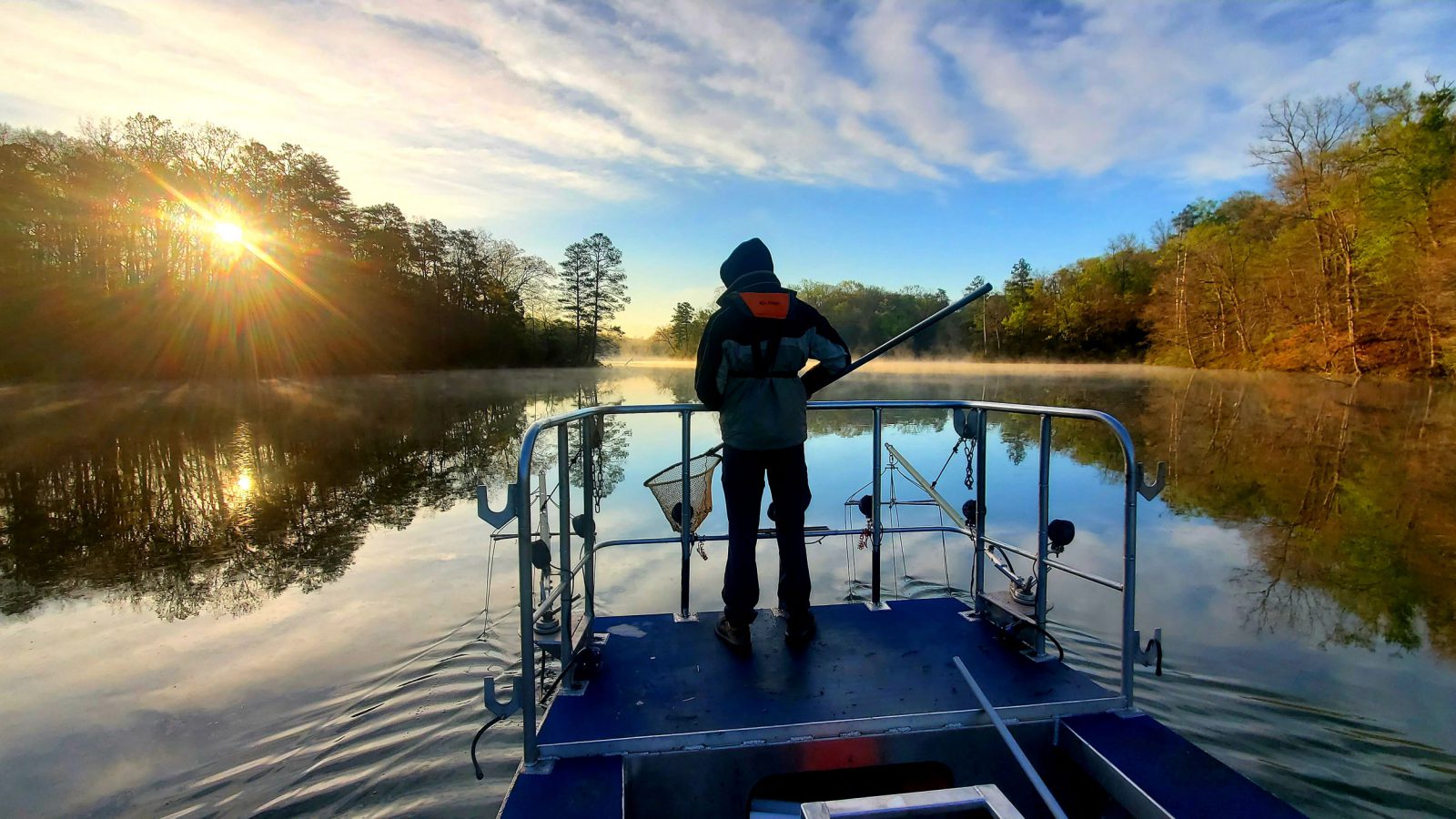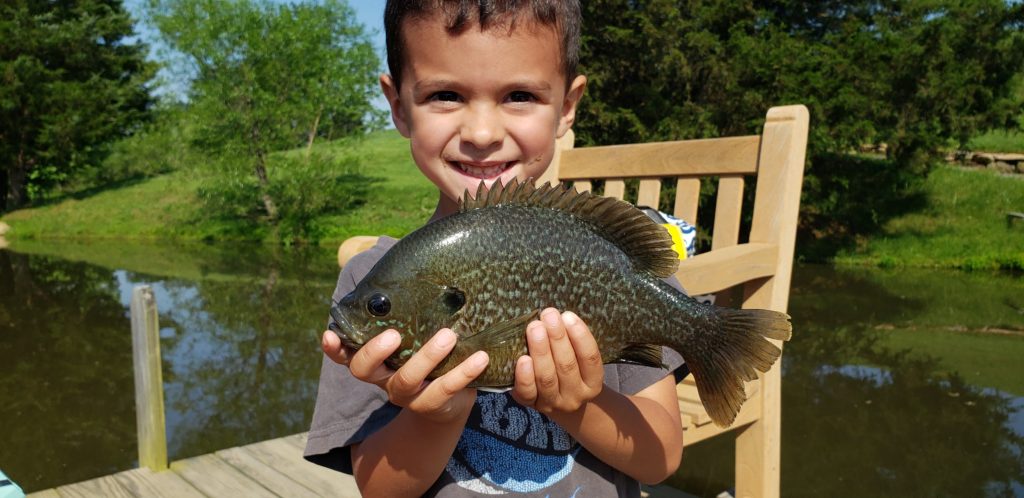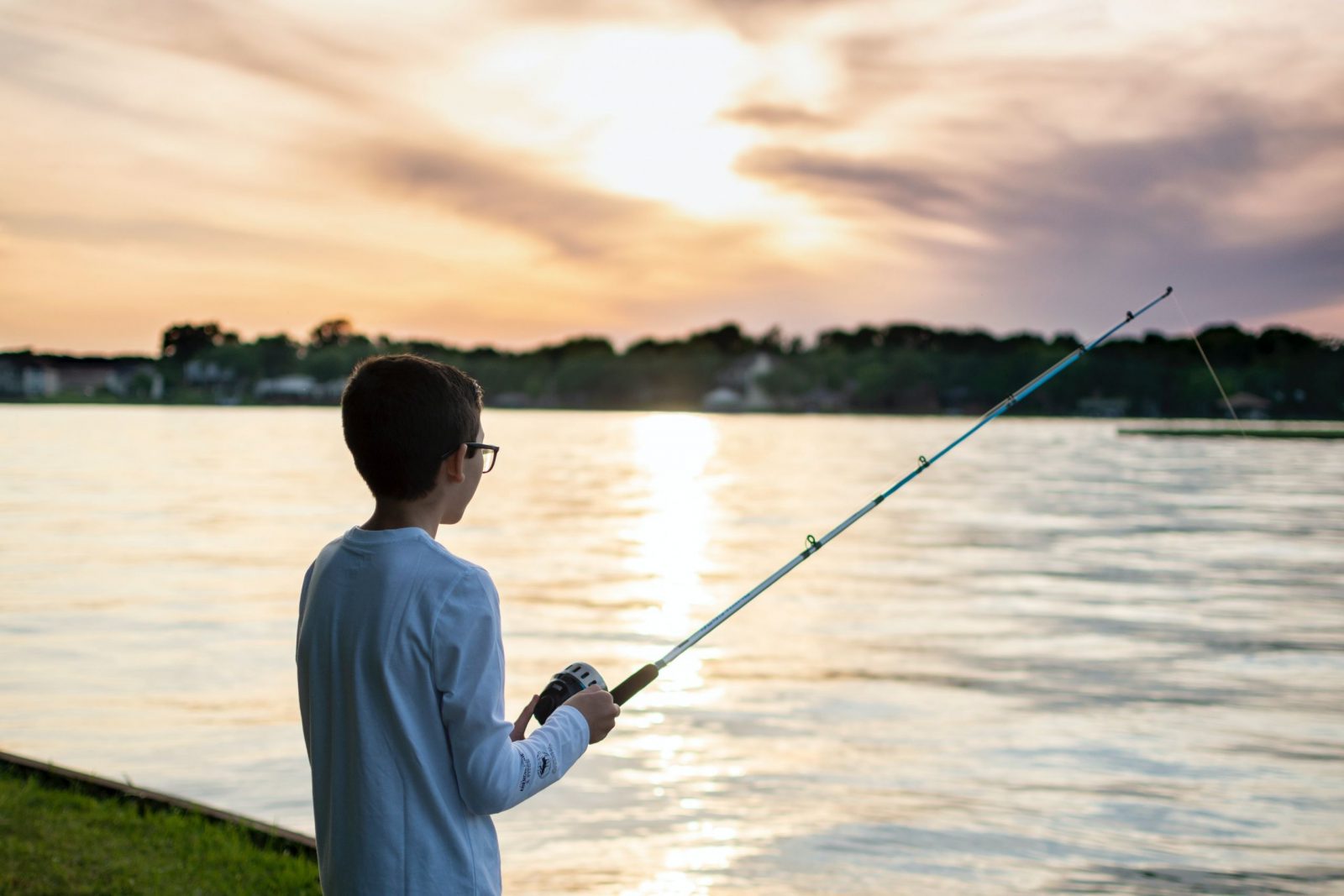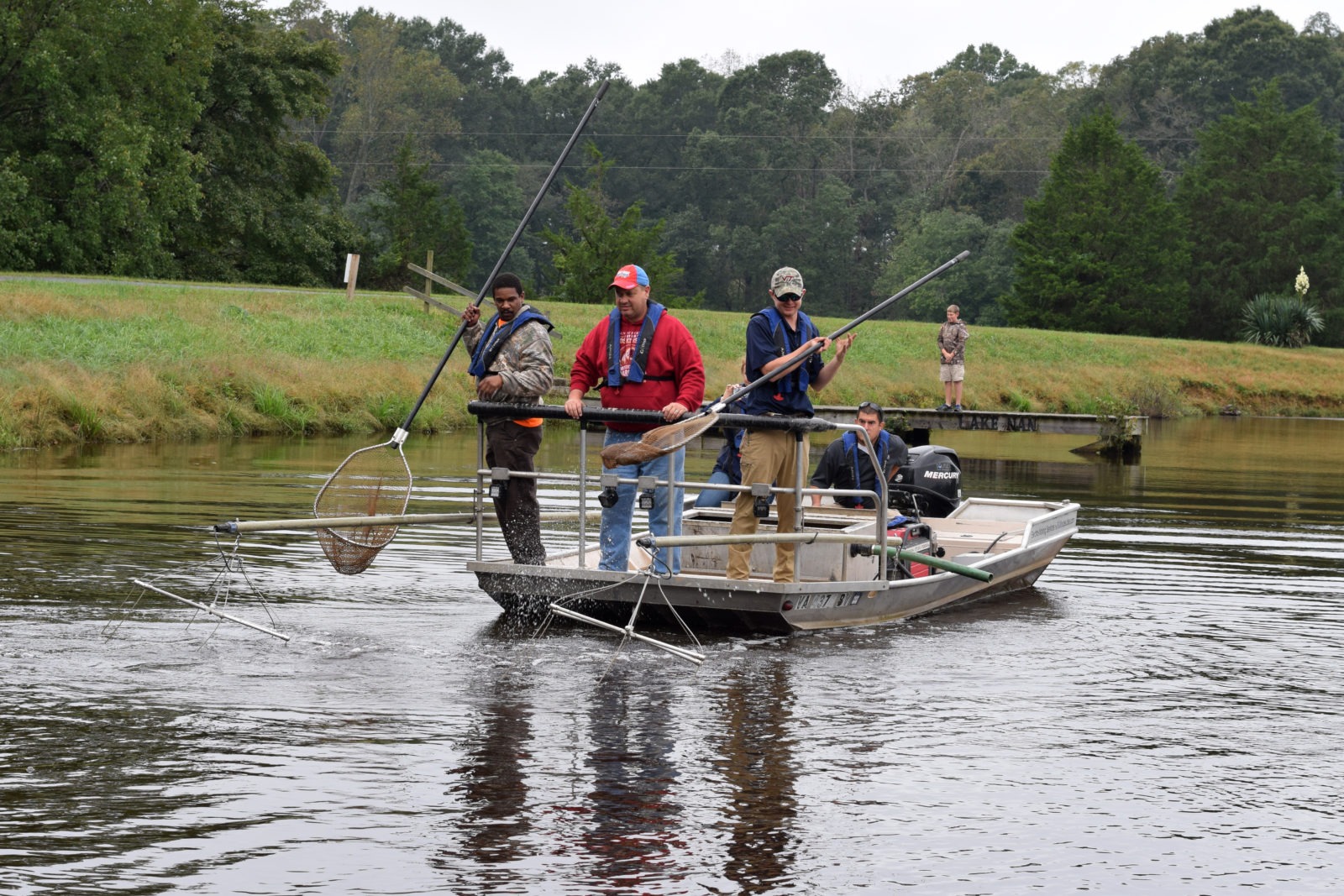
Considerations When Creating an Entertaining Fishery
AS SEEN IN POND BOSS MAGAZINE
For those who have had the pleasure of relaxing on private property that seems to have all the luxuries of entertainment figured out—from décor to food to the vast number of indoor and outdoor activities—you know comradery and bonding amongst family and friends shines through in those moments. These memorable experiences live on through conversations and storytelling.
Well-managed fisheries can also become a vibrant part of the culture on these properties. Storytelling of fishing successes and near encounters often become ingrained in conversations, helping fuel smiles and laughs that make life so special. Whether you are interested in revitalizing a stagnant fishing pond or starting a brand-new journey as a fishery owner, it’s important to understand the groundwork needed to help achieve the fishery of your dreams:
Learn What Is Possible and Set Realistic Goals
Whether your entertainment paradise already exists, or you are still building it, well-managed fisheries enhance the property’s monetary and entertainment value. Before putting energy into stocking and growing fish, first determine what type of fisheries are realistic, based on your waterbody’s characteristics. The good news is that most waterbodies have potential to produce a highly entertaining fishing spot; but the unfortunate reality is not all wet spots have what it takes to become a true trophy fishery. It is important to collect necessary data upfront to make informed decisions regarding long-term direction. This will allow you to choose the right species and quantities for the job as you look to create a fun and energizing atmosphere for family and friends.
Hit Your Goals Quickly
Creating a quality quantity fishery where you have high catch rates of mid-sized fish, or creating a trophy fishery where there’s a lower number of fish reaching maximum size can both prove to be challenging. The longer it takes to succeed, the greater risk of missing your target due to unforeseen setbacks. These setbacks are typically tied to Mother Nature, and even when applying excellent foresight to your strategy, risks are imminent. Goals are important, do not leave things to chance. Instead, implement a strategy to reach your goals as quickly as possible. This ensures the highest odds of success.
The best, most consistent way to achieve predator growth goals is to start with a waterbody that has no fish in it. The exact strategy and timing of events vary depending on the waterbody and time of year, but build up a robust baitfish population prior to introducing bass or other predator fish. This results in hitting your end goal sooner, while reducing amounts of supplemental forage fish that need to be stocked later.
Consider a real-world example of this strategy in action. A client was able to rapidly meet their goal of establishing a quality entertainment fishery that contained a high concentration of Largemouth bass reaching five pounds in size.
This new pond was first stocked with ten pounds of fathead minnows and thirty pounds of golden shiners were per acre. These forage fish thrived for a year in predator-free, plankton-rich water where they also fed on an aggressive amount of fish feed.
The following spring, after twelve months in the pond, the water was teeming with minnow life…dinner for newcomers. Dense numbers of forage fish were visible everywhere you looked. It was primed and ready for predators. One-and-a-half-pound female Largemouth bass were stocked at a rate of 40 fish per acre. These larger female fish were chosen because they facilitated higher-than-normal catch rates of quality bass to grow to reach five pounds within a shorter period when compared to other stocking options available. They were northern strain bass, bred to be aggressive.
As seen in the electrofishing data, these bass grew well and averaged three pounds at six months after introduction. Bass growth rates averaged a quarter pound per month for the first six months in the pond and the best fish collected that fall was just shy of five pounds—in stride with the client’s goal. During the second year, a massive rain event significantly increased the pond’s watershed as a stream jumped its bank, causing massive flooding, which swept many of the forage fish out. Even with that curveball thrown by Mother Nature, the bass population stayed intact and was able to average 3.75 pounds within 18 months, providing anglers the opportunity to catch top performing bass. They ranged between four and five pounds.
Although this example highlights a fishery built from scratch with a relatively simple goal in mind, the principle of reaching your goal quickly is applicable to most fisheries. Strategies and techniques continue to improve, allowing innovative biologists to hit client goals faster and more consistently each year, regardless of the starting point of the waterbody.
For ponds and lakes with existing predator populations, the challenges to overcome are more significant and the margin for error is far narrower. As a result, a data-driven approach is necessary to point the fishery into the right direction as a quickly as possible.
If your priority is to create a robust fishing experience, make sure your fisheries biologist is accountable for obtaining results by setting and efficiently hitting both short-term and long-term goals.
Have Something Fun for Inexperienced Anglers
If creating an entertaining, memorable fishery, it is important to consider decent-sized, easy-to-catch fish that congregate around a dock. Although there are several approaches to create fun fishing for inexperienced anglers, I encourage starting with a feed-trained species. Common species to consider for this application would be sunfish, hybrid striped bass, Largemouth bass, catfish and trout.
Feed-trained hybrid sunfish are a crowd favorite. Rather than the typical green sunfish/bluegill hybrid that most pond owners have used historically, consider a redear sunfish/bluegill hybrid. These hybrids are truly amazing and are one of the most fun fish I have encountered. Top-performing hybrid sunfish in systems stocked three years ago are tipping the scales at 1.95 pounds and 11.25 inches. Sunfish with the ability to grow nearly two pounds and reach close to a foot long in just three years after stocking are incredibly entertaining for all anglers of all levels.
Add In Additional Excitement When Possible
Fish stories about the “one that got away” seem to naturally have a way of coming to life. Regardless of where reality ends and exaggerated memories begin, the presence of unique or random species that generate excitement can be one of the best ways to get family and friends energized and talking about fishing. To do this, it is important to choose species that fit within your management strategy, as well as your local geography. The 30-pound Blue/Channel Hybrid Catfish in the photo, aka “Marge” is a perfect example of a fish capable of ratcheting up the excitement level and storytelling as you work to create a fun fishing experience that will add to the entertainment component of the property. This pond, in particular, entertains those who live on-site, as well as family members that visit from out of town. Maintaining high catch rates with fish like Marge is not realistic for a small farm pond, and therefore she is not caught often. Instead, the fishery is managed for quality Largemouth bass and trophy sunfish. Catch rates of quality fish are good and although it would be nice, a fish like Marge is more of a conversation piece and an occasional dedicated fishing outing, rather than a fish that is continually targeted each time people go fishing. Keep in mind a fish as large as Marge will eat up to three-pound bass and the biggest sunfish. If that’s okay with you, that’s okay with me.
Sometimes legendary fish are the ones you target each outing, such as 6-10-pound Largemouth bass or two-pound sunfish. In trophy fisheries, I encourage pond owners to stick to trophy Largemouth bass and trophy sunfish to generate excitement. The simple reason for this is because when trying to grow Largemouth bass as big as possible, all available fish biomass should be dedicated towards that singular goal. Having some trophy sunfish can fit nicely into a trophy bass fishery, since all is needed is a fish feeder with high-quality feed. You will soon have trophy sunfish while having little, if any, negative impact on achieving bass growth goals.
Those managing for balanced or quality fishing will find it easier to have a variety of unique fish present. In some cases, these surprise fish are large, but just as often they can be an average-size fish, since they help create an exciting fishing experience where you never really know what may be caught that day. When deciding which species are best for a situation, make sure to understand what will realistically survive and grow, versus what species sound good, but will never properly establish due to improper water temperatures or oxygen levels.
Whether setting goals, working to achieve them as quickly as possible, or adding creative ways to enhance angler excitement, make sure you are thinking big enough to maximize the entertainment potential of the property as well as the fishery that complements it. Few things in life bring happiness to family and friends that match the smiles and laughter with quality time spent together in the right setting.
SOLitude Lake Management is a nationwide environmental firm committed to providing sustainable solutions that improve water quality, enhance beauty and preserve natural resources.
SOLitude’s team of aquatic scientists specializes in the development and execution of customized lake, stormwater pond, wetland and fisheries management programs. Services include water quality testing and restoration, algae and aquatic weed control, installation and maintenance of fountains and aeration systems, shoreline erosion control, muck and sediment removal and invasive species management. SOLitude partners with homeowners associations, golf courses, private landowners, businesses and municipalities. SOLitude Lake Management is part of Rentokil, a leading business services company, operating across the United States, Canada and Puerto Rico.
For more information, visit SOLitude Lake Management at solitudelakemanagement.com, and connect on Facebook, LinkedIn and Twitter.








